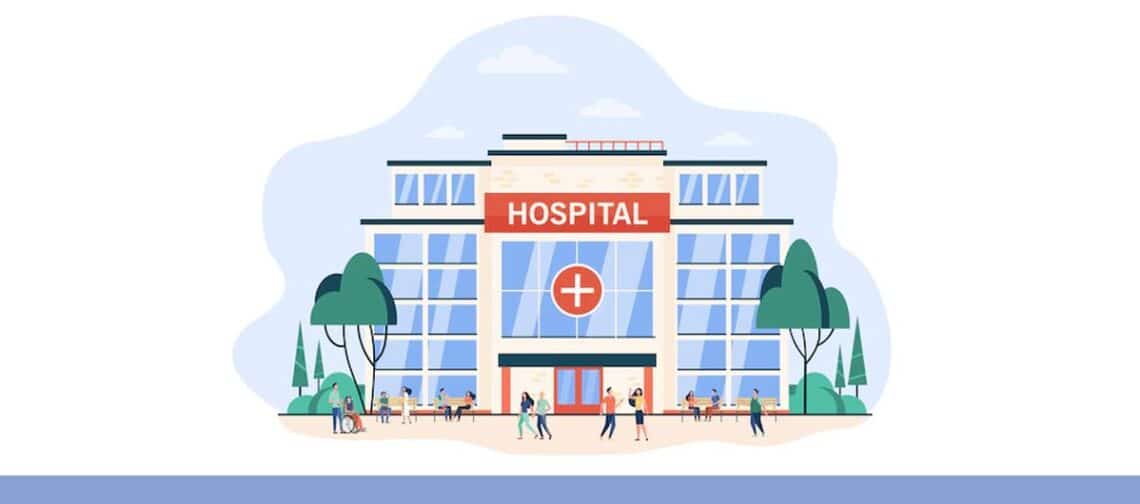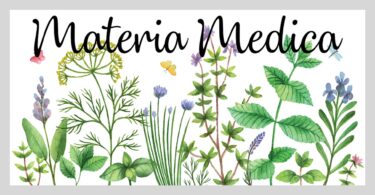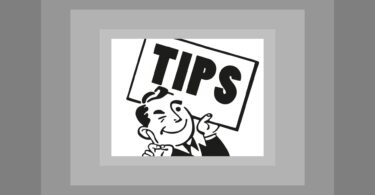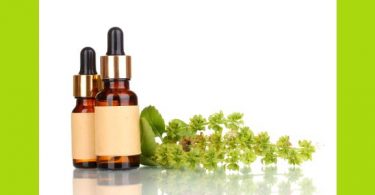Author’s note: This article is a dramatization of a typical day in the life of a homeopathic hospital. The descriptions of the patients, their diagnosis and treatments are based on actual cases.
I will be your guide today in our sojourn through a typical day at a homoeopathic hospital. Our hospital is located in a metropolitan city. It is a 10 bed hospital equipped with basic instruments like a pulse oxymeter, nasogastric tubes, suction catheters, ECG machine, sugar strips suturing material, forceps, scissors to cater to superficial incisional wounds or contused, lacerated wounds are kept handy, though not routinely used. We have a single bed intensive care unit with oxygen cylinders, ECG monitor, D.C. machine, venti etc. and a small but skilled nursing staff. Apart from regular homoeopathic doctors we also have a physician attached to us to monitor patients as per required.
We have kept emergency facilities limited as our focus is primarily dispensing homoeopathic medicines. However if any critical patient does come in we have a physician who takes care of the immediate requirements with respect to curbing the emergency and maintaining homoeostasis, while we in the meantime take over.
I remember a case of intracerebral haemorrhage in an old hypertensive lady. Whilst mannitol was infused immediately to contain and reduce the cerebral oedema, our homoeopaths got to work. A brief history was elicited from the family and a few characteristics were considered, like dusky red face and half closed eyes. One could hear the stertor very clearly in the comatose patient. A quick prescription of opium was made in the 50 millesimal potency with frequent repetitions. She was intensively monitored over the next few days. She eventually came around and showed positive signs of improvement. Her paretic arm gradually started twitching and her slurred speech improved. She recovered, albeit with few neurological deficits but she left the hospital a few days later, thankful and full of gratitude for the help homoeopathy had provided her.
At the same time one also remembers a case of diabetic ketoacidosis who exhibited typical Kussmaul’s respiration on admission. We were unable to collect any meaningful data due to the sheer pace of decline of the patient. All lifesaving drugs and mechanical interventions failed to elicit a response and as she deteriorated we shifted her to another hospital. We heard she died on the same day. Incidents such as these make us realise our limitations . Unless the vital force is strong enough, our medicines cannot act adequately. Vitality of the patient is a very significant parameter in homoeopathic cures and we are not justified in claiming miraculous results without being aware of the individual patient’s vitality. These cases are not very common.
In our hospital we have a homoeopathic OPD and IPD. As we can see today, the outpatient department normally has about 40-50 patients daily from all socio-economic streams and with different kinds of complaints. We do have ailments according to the season of the year. In India, we have three major seasons, summer, winter and rainy. The summer season sees many gastro-intestinal complaints – diarrhoea, dysentery, hepatitis, typhoid. At the beginning of summer we have many patients with conjunctivitis and URTI. The rainy season is notorious for respiratory, gastric and rheumatic complaints. Likewise the winters herald the onset of acute exacerbations of psoriasis, asthma, chronic bronchitis and arthritis. Homoeopathy thus caters to all patients with different complaints in all seasons. There are about 3 OPDs running from 9 am to 2 pm daily. Every OPD comprises of a senior doctor and a few students. Typically, the students take the case and present it. Let’s talk to one such learner.
‘I can see you are interviewing a new patient. Could you tell us more about this case?’
‘Well, this patient is a 29 year old lady having migraine since her marriage. The main stress seems to be that of her mother-in-law who is a very dominating lady. She is critical and fault finding and the patient is really tortured by her. But that is my understanding. When I will present this case to our professor, he will analyse it in a different way and explain all the finer nuances so perfectly, that we are often left wondering, why didn’t we think of this angle earlier! Also we report to different consultants on different days so we develop so many different viewpoints to a situation. This eventually helps us get into the patient’s shoes and gradually become an unprejudiced observer!’
Homoeopathy is a balanced integration of science and art and a teacher is but a culmination of a physician. It is worthwhile to note how the teacher in the physician elevates the thinking of the students and gradually evolves the clinician in the learner.
Another aspect of catering to patients in the OPD brings forth a crucial point – that of preventive medicine. We know that man is the product of interaction between his genes and his environment. His genetic make-up largely defines the diseases that he is prone to. We know that homoeopathy favourably affects man’s reactions to his environment in a bid to improve his adaptation to the ever changing inputs from his surroundings. And we do know from clinical experience that homoeopathy delays or altogether succeeds in quelling the onset of chronic degenerative diseases, which, today spell doom for mankind. Diseases like diabetes mellitus, dyslipidemia, chronic heart and kidney disease, cirrhosis, neurological derangements like Parkinsonism and dementias are the bane of human beings, as we have no definite therapeutic strategies for them in terms of curing them or slowing their progression. This is a huge drain on the family, community and national resources as these patients ultimately require frequent hospitalizations and the caregiver is strained mentally, physically and financially in the process. The mantle of preventive medicine can be effectively shouldered by homoeopaths around the world, but only if the concerned governments and policy makers are convinced of this aspect of homoeopathy.
And now we come to the IPD section. We had two new admissions in the morning. One was a case of periodical fever with rigours and headache and we were suspecting malaria and had sent the blood sample for a rapid malarial antigen test for immediate detection and prompt institution of treatment. As per Dr. Hahnemann’s directions, a single dose of the indicated remedy should suffice to control the malady. Right now he has high fever so we are sponging him to reduce the temperature. The other patient is an old man with acute confusion and disorientation. His electrolytes and sugar are normal. We are awaiting his renal profile. In the meantime we have started with frequent water doses of the probable simillimum.
Homoeopathic IPDs have a variety of patients, from severe, infective eczema, multidrug resistant staphylococci or clostridia induced recurrent, huge, painful furuncles with fever, dysmenorrhoea, menorrhagia with significant hypovolaemia, infective diseases like malaria, typhoid ,dengue, chikunguniya, acute renal colic, acute cholecystitis, acute appendicitis, chronic obstructive lung diseases, asthma etc to name a few. The list is endless but the challenges are manifold. Getting the patient duly investigated is a must in such cases, and so is a thorough knowledge of medicine. We had a few patients of Dengue admitted during the Dengue epidemic in India in 2013. One of the patients was showing a rapid decline in platelets and total leucocyte counts as confirmed by daily CBCs. We were constantly on the look-out for any haemorrhage commonly manifested as a rash, or any changes in vital parameters. After two days when the thrombocytopenia and neutropenia refused to stabilize, we changed the homeopathic remedy. The next day and onwards, the counts improved. During this, no allopathic medicines were administered, although our in-house physician had already prepared for a blood transfusion!
A hospital gives opportunities for application of all principles of homoeopathy, as well as an adept citing of living material medica images of drugs. We had a nurse who was so very affected if any patient was unwell, that she would sit up all night keeping an eye on the patient or checking his vitals, even when the patient was fast asleep! No wonder then, that a few such nights and she would fall sick. “Cocculus”- our students would yell! We had a grouchy Sepia and an irritable Nux-vomica and a few others who were not so easily categorised, yet discussions about their probable constitutional medicines abounded.
An IPD set-up enables us to remove the ‘maintaining cause’. This might include removal of a foreign body, drainage of pus, correction of fluid and electrolyte imbalance, suturing of contused, lacerated wounds or providing oxygen when PO2 falls critically. It also serves quick diagnostic purposes, like the recent case of an unconscious patient who was brought in. A recording of pulse, blood pressure, partial oxygen pressure, ECG, blood sugar etc. along with the relevant history and an accurate clinical examination helped in coming to a tentative diagnosis. And, as Dr Hahnemann had said, unless we know what is common, we won’t know what is peculiar, queer, rare and strange!
There was a terminal case of Hodgkin’s lymphoma and the treating physician was contemplating morphine, as the usual medicines were ineffective in reducing his pain. On a very peculiar symptom, he was prescribed a simillimum which dramatically relieved him in 24 hours. The patient stayed in a relieved state for a few days after which he died a peaceful death. This was nothing but palliation at its best. And this was possible because all streams of medicines converged at a common point – the well-being of the patient. This is what Dr. Hahnemann must have envisioned for the suffering humanity! And this is what a homoeopathic hospital stands for- a concerted effort on the part of physicians to heal the patient. Physicians, heal thyself!
I take your leave now. I hope I have been able to share with you what it’s like to be a part of a homoeopathic hospital. I hope I have been able to make clear that homoeopathy is a science to reckon with, and an art to be imbibed by every serious practitioner. A hospital is the perfect set-up for practising it in its fullest and most glorious extent. Have a good day!
Postscript: Today our homeopathic medicines are sometimes branded as placebos or even witchcraft. Through this article I have tried to show that the facts are far different from how they are often portrayed. Homoeopaths today keep up to date on research and technological advances and our system has a sound philosophical basis. All the cases are true cases and must be viewed as such without any prejudices!





interested in learning new things
Homeopathy utterly need this. I dreamed often of such a homeopathic establishment . If you do such effort in westbengal and if you like I like to be part of it. [email protected]
Thank you Dr. Joshi. That was a marvelous article. I wish all patients and doctors in the U.S. would read it. I’ll certainly send it to all my friends.
Aparna,
Thank you for this article. I have always wondered what it was like in a homeopathic hospital.
Thank you!
Carroll, Seattle